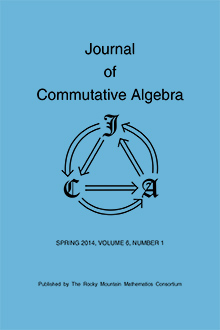Abstract
A celebrated theorem of Fröberg gives a complete combinatorial classification of quadratic square-free monomial ideals with a linear resolution. A generalization of this theorem to higher degree square-free monomial ideals is an active area of research. The existence of a linear resolution of such ideals often depends on the field over which the polynomial ring is defined. Hence, it is too much to expect that in the higher degree case a linear resolution can be identified purely using a combinatorial feature of an associated combinatorial structure. However, some classes of ideals having linear resolutions have been identified using combinatorial structures. In the present paper, we use the notion of
Citation
Priyavrat Deshpande. Amit Roy. Anurag Singh. Adam Van Tuyl. "FRÖBERG’S THEOREM, VERTEX SPLITTABILITY AND HIGHER INDEPENDENCE COMPLEXES." J. Commut. Algebra 16 (4) 391 - 410, Winter 2024. https://doi.org/10.1216/jca.2024.16.391
Information





